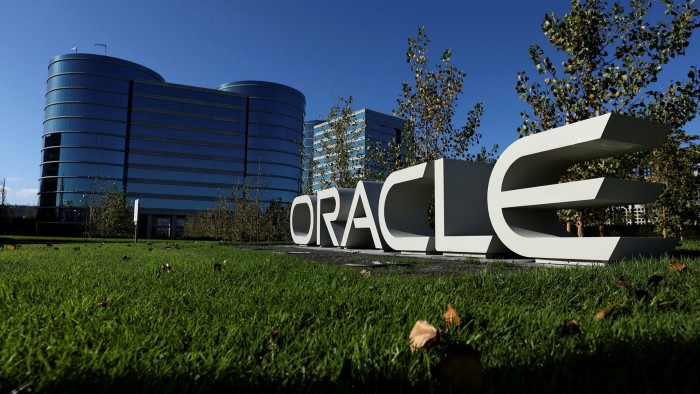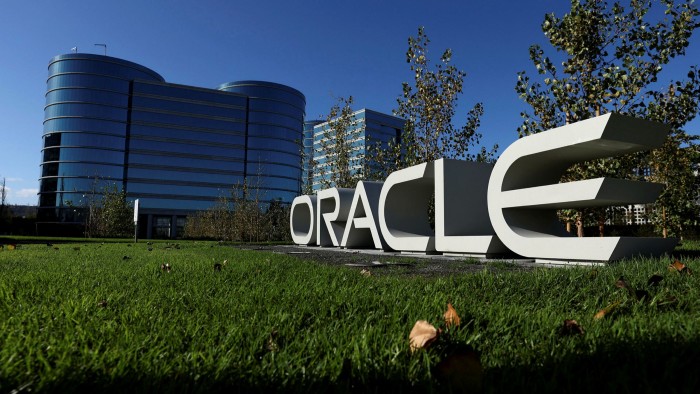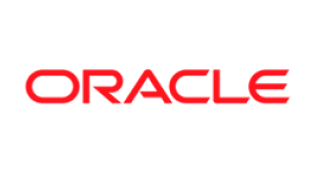Oracle Corporation (ORCL) on Q3 2021 Results - Earnings Call Transcript
Operator: Welcome to Oracle's Third Quarter 2021 Earnings Conference Call. Now I'd like to turn the call over to Ken Bond, Senior Vice President. Ken Bond: Thank you, Erica. Good afternoon, everyone. And welcome to Oracle's third quarter fiscal year 2021 earnings conference call. A copy of the press release and financial tables, which includes a GAAP to non-GAAP reconciliation and other supplemental financial information, can be viewed and downloaded from our Investor Relations website. Additionally, a list of customers mentioned on this customer conference call as well as many others which have purchased Oracle Cloud services or went live on Oracle Cloud recently will also be available from the Investor Relations website. Safra Catz: Thanks, Ken. And good afternoon, everyone. We are again, reporting earnings 10 days after the end of the fiscal quarter, faster than any other company in the S&P 500. Fusion Cloud ERP enables us to understand our business performance sooner and with greater insight, which is an advantage our customers are rapidly beginning to appreciate. As you can see, we had a great quarter and executed well against our growth plan. Revenue was in line with our USD guidance while EPS beat the mid-point of guidance by $0.05. Our total cloud services and license support revenue for the quarter was $7.3 billion, up 5% in U.S. dollars, 2% in constant currency, driven by Fusion, Autonomous Database and our Gen2 OCI cloud. Recurring revenue, as a percentage of total revenue now represents 72% of total company revenue and we anticipate this trend to continue as cloud services grow. Application subscription revenues were $3 billion up 5% in U.S. dollars, 3% in constant currency. Our strategic back-office cloud applications now have annualized revenue of $4 billion and grew 24% this quarter, including Fusion ERP up 27%, NetSuite ERP up 22% and Fusion HCM up 21%. Infrastructure subscription revenues were $4.3 billion, up 4% in U.S. dollars, up 2% in constant currency. Infrastructure cloud services now have an annualized revenue of more than $2 billion, including OCI consumption revenue, which was up 123%; autonomous database was up 55%; cloud customer consumption revenue was up over 200%, but on small numbers. Larry Ellison: Thank you, Safra. Three months ago, Bob Evans posted an article on the Cloud Wars’ website in which he quotes SAP, CFO, Luka Mucic making the following statement at an investors conference. And I quote, “I have checked and we have not lost a single ERP customer to Oracle.” In other words, after personally, checking SAP’s Chief Financial Officer could not find a single example of an SAP ERP customer move into Oracle Fusion on ERP, not one. Perhaps he should have checked a little bit more carefully. In Q3 alone we signed contracts, totaling hundreds of millions of dollars to migrate several very large SAP ERP customers, to Oracle Fusion ERP. But this was not just a recent Q3 event. This has been going on for a couple of years. Ken Bond: Thank you, Larry. Erica, if you could please pull the audience for questions. Operator: Our first question comes from Michael Turits with KeyBanc Capital. Michael Turits: Larry, thanks for all the color on ERP. I'd like to switch over to your database. You've made meaningful improvements in both cloud customer and OCI too which both one of the two are required for ADB. So, are those improvements enough that we're now starting to see the upgrades to ADB? And are you able to monetize those upgrades to the point where we'll start to see database growth acceleration? Larry Ellison: The answer is I think there's no question. You're going to see a lot of database growth – a lot of database acceleration starting next year which we're a quarter away from. But we'll be fine in Q4. Again, its autonomous databases is growing pretty rapidly. But we expect it really to explode next year. And I really do mean very, very rapid growth next year. I'm not really ready to disclose our plans as to why I think it's going to suddenly spike but we expect very, very rapid database growth next year. Michael Turits: Thanks, Larry. Operator: Our next question comes from Mark Murphy with JPMorgan. Mark Murphy: Yes. Hi Larry. This SAP replacement wave, feels like kind of a historic moment because that kind of activity it's usually so rare and these are the logos are pretty large that you're mentioning. So when we see… Larry Ellison: I acknowledge for interrupting. The really spectacular logos there's some of them are pretty spectacular on there. But we have some that are much larger and much – and absolutely shocking. I've been alluding to these, but sometimes we're in the middle of an 18-month implementation. And the customer doesn't want any mention. If I could mention them all, it would be – it’s front page news. I mean it's a very big deal. Yes. I agree with you. It's an historic event. It is – I think a long time ago, I said there are two technologies that will drive Oracle's future, one is the autonomous database and the other is ERP. We are – reading the Gartner report, we are so dominant. Our product is so much better than anyone else's product in the cloud. We expect to get a significant number more than half of SAP's customers we’ll get. But keeping our own, yes, plus getting a lot of it from the smaller companies like M4 and Lawson. Mark Murphy: So Larry, the ones that we see, which aren't too savvy, you mentioned DHL and Honda and Lloyds Bank. Is that a precursor to moving to Oracle core financials eventually. And I'm just wondering which of Oracle strength is really catalyzing that wave of replacements? Larry Ellison: Okay. So there are two lists. One, the first half of the list that I read and they're about equal sized lists where people that are already moved from SAP financials to Oracle financials. The second list where people that had partially moved to Oracle, but still were running SAP financials in some places. In other words, we don't consider it a complete win until we replace out. If we just sell procurement and supply chain and manufacturing and things like that, but they still run SAP financials we don't consider that a complete win. That's what we call our surround strategy. But once you start using our cloud products and compare that with SAPs on premise products, we think the vast majority of these companies that it started the journey, we'll finish the journey. And they'll want financials in the cloud, just like they have supply chain in the cloud, in procurement in the cloud. So yes, we expect company – we've already seen companies migrate off the second list. They buy procurement, they buy supply chain and they see, okay, I like that. And I'm going to buy financials. So yes, we expect all of those or excuse me, the vast majority of those customers to eventually standardize on Fusion Cloud ERP for everything. Mark Murphy: Thank you. Operator: Our next question is from Mark Moerdler with Sanford Bernstein. Mark Moerdler: Thank you. Thank you very much for taking my question and appreciate the additional color that Safra you gave on the call. I'd like to turn to OCI Gen2. We've been hearing about security concerns from consumer internet companies. To what extent has OCI security technology helped you in business with these companies and is consumer internet a big driver for OCI Gen2, also to be clear, this is not about TikTok, it's that all the other consumer internet company opportunities. Thank you. Larry Ellison: Yes. Well I think there are two things that are interesting about OCI. One on the security front. One is we believe security should be always be turned on and in other words, there is no light switch, security on, security off. We have these things called max security zones in OCI where you cannot turn security off and max security is always turned on. It's a safe place to go inside of OCI. No one has anything like this, where security is always turned on. You cannot turn it off. You cannot open up a link – a network link that puts your infrastructure and your data in jeopardy. That's one thing. So security is always on. The second thing is autonomy is very interesting, because the Oracle autonomous database, by the way, the Oracle autonomous database is not the only autonomous product we have. We have autonomous Linux that is the foundation of OCS, the foundation operating system inside of the OCI network. Oracle autonomous, Linux, Oracle autonomous database has no human labor associated with them. Okay. So everyone says, well, that's a huge cost saving. It is, but that's not the most important benefit. The most important benefit if there is no human labor, there is no human error. If there's no human labor, there's no human mission, there's no opportunity for an insider to corrupt the system. There's no opportunity for a user to misconfigure a system that creates a security vulnerability that will lead to the loss of data. So, we think one of the most attractive aspects of OCI, other than its high performance, low cost, all of that, everyone likes to pay less and they do with OCI. But we do a better job of securing your data than any other cloud vendor. We've seen that be the decisive feature in winning a lot of these deals with ISVs and end user customers. Mark Moerdler: I appreciate it. Thank you for the additional color. Operator: Our next question comes from Phil Winslow with Wells Fargo. Phil Winslow: Hi, thanks for taking my question. Congrats on a strong quarter. I just wanted to focus in on the license line it was up 4% as reported to be a flat constant currency off of what was actually the toughest comp for this fiscal year. Wondering if you can provide some context of sort of what is driving that particularly sort of relative to the strength that you are also seeing in the cloud side? Is this the Oracle database, is this the add-ons to the Oracle database? Any sort of more color there. And then also in particular in sort of in conjunction with the cloud, that'd be great. Safra Catz: So let me take that. So the Oracle database remains very strong and what's good about the Oracle database is you can also bring your own license to the cloud. So it's both on-premise and in the cloud can be used there. And it remains very, very strong. The installed base of the Oracle database continues to grow. And that is of course our central piece. Now, in addition, Java on-premise continues to do very well as more and more companies continue to invest in Java and trust Java for their own applications. And in addition, our vertical applications, some of our industry applications still require on-premise license for the customers’ use. We also have cloud services in many of these verticals, but especially in telecommunications, as many of the communications companies move to 5G, we are a very central part of their transition to 5G and need our license in those areas. So database tops, doing incredibly well, Java doing very, very well and our vertical applications. And then pretty much everything else of course as you know is offered just in the cloud. Phil Winslow: Perfect. Thank you very much for the color. Appreciate it. Operator: Our final question comes from Brad Zelnick with Crédit Suisse. Brad Zelnick: Great. Thank you so much for taking the question. And congrats as well on a great quarter. Larry, it's so great to hear every single one of those SAP wins, especially since investors think of SAP's customer relationships as being so deep. So clearly by displacing them in so many accounts, it speaks volumes to the quality of your product and trust that these companies place with Oracle. So, my question is this, why now, and why from a product perspective, you mentioned Gartner's take, but since Oracle has always competed on having better products, what have you been doing product wise that's enabled you to pull ahead of them like this and what do you need to continue to do product wise to remain ahead? Larry Ellison: So well we started 10 years ago to build fusion financials for the cloud to rewrite all – PeopleSoft ERP, JD Edwards ERP, and of course, Oracle E-Business Suite, we had these three separate on-premise ERP systems, and we decided a decade ago to rewrite all of that with the cloud. And SAP unbelievably, they just, I mean – and we did a very good job. We started a decade ago and we did, I think, a very good job redoing a big job, to say the least, redoing our ERP products for the cloud. That said, SAP chose not to rewrite their ERP products. Instead, they made a bunch of acquisitions. They bought Concur, they bought Ariba, they bought SuccessFactors, but they never – and we made some acquisitions also by the way, and others right now at other things. But we rewrote everything for the cloud. SAP instead, embedded their own database called HANA and focused on this new database and never really rewrote their ERP code for the cloud. I mean, it's just an unbelievable error. They worked on a new database and the, the thing we're competing with at so-called S/4HANA in the cloud, is what the SAP calls it, is not a cloud product at all. It is the 35-year-old ABAP, this is written in a programming language called ABAP. Oracle Fusion is written entirely in Java. And it's been entirely rewritten overload over the last decade. SAP stuff is literally 30 years old. The same that they've always had, that they now will host for you. So I would say we did a competent job rewriting for the cloud, SAP just entirely missed the boat. So SAP really is more responsible for our leadership position than we are. Again, they never rewrote their application for the cloud. It's unbelievable what's happened. And their customers are noticing. We offer a new release of our ERP system every 90 days. We offer new features and functions. That's how the cloud works. You are on the cloud, you get new features and functions, you are on this 90-day cadence. We give you more features and more capabilities every 90 days. SAP has nothing like that. It's not a cloud system. It's simply is okay, you can get the SAP S/4HANA and you can get it hosted by somebody, but they don't even have a cloud. They never built a cloud. That's what happened. Brad Zelnick: Thank you, Larry. Larry Ellison: It’s amazing. Ken Bond: Thank you, Larry. A telephonic replay of this conference call will be available for the next 24 hours. Dial-in information can be found in the press release issued earlier today. Please call the Investor Relations department with any follow-up questions from this call. And we look forward to speaking with you. Thank you for joining us today. With that, I will turn the call back to Erica for closing. Operator: Thank you for joining today's Oracle's third quarter of 2021 earnings conference call. We appreciate your participation. You may now disconnect.
Oracle Corporation Partners with Duality Technologies to Enhance Government and Defense Sectors with AI Solutions
- Oracle Corporation (NYSE:ORCL) has partnered with Duality Technologies to offer a privacy-first AI solution for government and defense sectors, deployable on Oracle Cloud Infrastructure (OCI).
- The collaboration enables secure data collaborations for mission-critical operations, leveraging OCI's robust security and interoperability features.
- Despite a recent decrease in stock price, BMO Capital maintains an "Outperform" grade for Oracle, raising its price target from $345 to $355.
Oracle Corporation (NYSE:ORCL) is a global leader in database software and technology, cloud-engineered systems, and enterprise software products. The company has recently partnered with Duality Technologies to offer a privacy-first AI solution for government and defense sectors. This collaboration introduces Duality's secure data collaboration platform to the Oracle Cloud Marketplace, making it deployable on Oracle Cloud Infrastructure (OCI).
The integration allows government, defense, and intelligence agencies to conduct secure data collaborations for mission-critical operations. Leveraging OCI's robust security and interoperability features, the platform supports specialized cloud environments, including Oracle Cloud Isolated Regions. This ensures that agencies can issue encrypted queries and receive confidential results swiftly, maintaining high security standards and regulatory compliance.
Duality's platform, powered by OCI's high-bandwidth and low-latency architecture, is designed for compute-intensive analytics and AI workloads. This adaptability is crucial for evolving mission needs. Dr. Alon Kaufman, CEO of Duality Technologies, emphasizes the balance between innovation and confidentiality, allowing agencies to extract valuable intelligence while maintaining stringent security and privacy standards.
Rand Waldron, vice president at Oracle, highlights the company's commitment to national security and defense organizations. The partnership with Duality provides a comprehensive ecosystem of solutions, enabling customers to securely collaborate and utilize advanced AI tools. This transforms sensitive data into strategic advantages, reinforcing Oracle's position in the market.
Oracle's stock, trading at $302.34, has seen a decrease of approximately 1.84%, with a drop of $5.68. Despite this, BMO Capital maintains an "Outperform" grade for Oracle, raising its price target from $345 to $355. Oracle's market capitalization is approximately $848.14 billion, with a trading volume of 11.18 million shares, as highlighted by BMO Capital.

Oracle Commodity Holding Corp. Announces Upsized Private Placement Financing
- Oracle Commodity Holding Corp. has increased its non-brokered private placement from 7.5 million units to 8 million units due to high demand, raising potential gross proceeds to $280,000.
- Company insiders will subscribe for up to 1.75 million units, contributing up to $61,250.
- The proceeds will be used for general corporate purposes and to acquire a 2% royalty from U.S. Fluorspar LLC, aiming to strengthen the company's position in the mining royalty sector.
Oracle Commodity Holding Corp. is a mining royalty company with interests in precious metal and critical mineral projects. Recently, the company announced an increase in its non-brokered private placement financing due to high demand. The offering has been upsized from 7.5 million units to 8 million units, raising potential gross proceeds to $280,000. Each unit includes one common share and one transferable common share purchase warrant, allowing the holder to acquire an additional share at $0.06 for three years.
Company insiders are set to subscribe for up to 1.75 million units, contributing up to $61,250. This transaction is considered a related party transaction under Multilateral Instrument 61-101, but the company is exempt from formal valuation and minority shareholder approval requirements. The offering is expected to close soon, pending necessary regulatory approvals, including from the TSX Venture Exchange.
The proceeds from this financing will be used for general corporate purposes and to pay for the acquisition of a 2% royalty from U.S. Fluorspar LLC over certain fluorspar projects. CEO Jason Powell is leading the company through this expansion, aiming to strengthen Oracle Commodity Holding Corp.'s position in the mining royalty sector.
Oracle Corporation, trading under the symbol NYSE:ORCL, is a separate entity from Oracle Commodity Holding Corp. Evercore ISI recently maintained its "Outperform" grade for Oracle, with the stock priced at $296.96. Evercore ISI also raised Oracle's price target from $340 to $350, indicating confidence in the company's future performance.
Oracle has demonstrated an asset turnover ratio of approximately 0.33 over the trailing twelve months, showing its efficiency in using assets to generate revenue. The operating profit margin stands at about 30.44%, reflecting Oracle's ability to convert sales into operating profit effectively. In the most recent quarter, Oracle reported a revenue of $14.93 billion, with a gross profit of $10.04 billion after accounting for the cost of revenue.

Oracle Commodity Holding Corp. Expands Financing Amid High Demand
Oracle Commodity Holding Corp., a mining royalty company specializing in precious metals and critical minerals, has announced an increase in its non-brokered private placement financing due to high demand. The offering, initially set at 7 million units priced at $0.035 per unit, has been upsized to 7.5 million units, raising potential gross proceeds from $245,000 to $262,500. Each unit includes one common share and one transferable common share purchase warrant, allowing the holder to acquire an additional share at an exercise price of $0.06 for three years from issuance.
Company insiders are expected to subscribe for up to 1.75 million units, contributing up to $61,250 in gross proceeds. This transaction is considered a related party transaction under Multilateral Instrument 61-101. However, the company is exempt from formal valuation and minority shareholder approval requirements, as insiders' participation will not exceed 25% of the company's market capitalization. The offering is subject to regulatory approvals, including from the TSX Venture Exchange, and the units will be issued privately under exemptions from prospectus requirements. The proceeds from this offering will be used for general corporate purposes and to pay for the acquisition of a 2% royalty from U.S. Fluorspar LLC over certain fluorspar projects. This strategic financial move is led by CEO Anthony Garson, who is steering the company through this growth phase.
The company's focus on expanding its royalty interests aligns with its long-term strategy to enhance shareholder value. In contrast, Oracle Corporation (NYSE:ORCL) is a major player in the technology sector, with a price-to-earnings (P/E) ratio of approximately 64.39. The company's price-to-sales ratio is about 13.47, and its enterprise value to sales ratio is around 15.08.
Oracle's enterprise value to operating cash flow ratio is approximately 41.34, with an earnings yield of about 1.55%. The company has a debt-to-equity ratio of roughly 4.36, indicating a significant level of debt compared to its equity. Additionally, Oracle's current ratio is approximately 0.62, suggesting that its current assets are not sufficient to cover its current liabilities.
On September 26, 2025, UBS set a price target of $364 for Oracle, as highlighted by UBS. At the time of this announcement, Oracle's stock price was $291.41, indicating a potential increase of approximately 24.91% from the current price. This reflects the market's positive outlook on Oracle's future performance, despite its high debt levels and low current ratio.

Oracle Corporation's (NYSE:ORCL) New Price Target and AI Sector Wins Drive Optimism
- Oracle Corporation (NYSE:ORCL) receives a new price target from Guggenheim, suggesting an 11.18% increase.
- The company's significant contract wins in the AI sector have led to a 37% surge in shares.
- Oracle's strategic partnerships and a 77% increase in cloud infrastructure sales forecast highlight its strong market positioning.
Oracle Corporation (NYSE:ORCL) is a leading player in the technology sector, known for its database software and cloud infrastructure services. Recently, John DiFucci from Guggenheim set a new price target for Oracle at $375, up from its current price of $337.28. This target suggests an 11.18% increase, reflecting optimism about Oracle's future performance.
Oracle's shares have surged by over 37% following significant contract wins in the AI sector. The company secured billion-dollar deals, underscoring its growing influence in the AI market. This development has boosted investor confidence, as highlighted by the stock's 30% surge in premarket trading after announcing an improved sales outlook for its cloud infrastructure.
The company's strategic positioning is further strengthened by partnerships with tech giants like Amazon, Alphabet, and Microsoft. Oracle anticipates a 77% increase in cloud infrastructure sales, reaching $18 billion this fiscal year. This surpasses its previous forecast of 70% growth, driven by the increasing demand for AI solutions.
Richard Clode from Janus Henderson Investors describes Oracle's performance as a "drop the mic" moment. The company has secured $300 billion in contracts, reflecting unprecedented demand for AI. This growth is supported by sovereign drivers enhancing capital expenditures, expanding Oracle's market presence.
Oracle's stock, currently priced at $337.06, has seen a significant rise of 39.56% over the past year. The stock has fluctuated between $239.94 and $339.69 today, with a market capitalization of approximately $946.74 billion. The trading volume stands at 42.4 million shares, indicating strong investor interest.

Oracle Corporation's (NYSE:ORCL) Growth in the Cloud Computing Sector
- Guggenheim maintains a "Buy" rating for Oracle, raising its price target from $250 to $375, indicating strong confidence in Oracle's growth, especially in cloud services.
- Oracle's stock has seen a significant increase, with a price jump of $3.03 or 1.27%, showcasing its strong performance in the tech market compared to competitors like Apple.
- The company's market capitalization stands at approximately $678.36 billion, reflecting its substantial presence and volatility in the tech industry.
Oracle Corporation (NYSE:ORCL) is a leading technology company known for its software products and services, particularly in database management. The company has been making significant strides in the cloud computing sector, which is a key growth area. Oracle competes with other tech giants like Microsoft and Amazon in the cloud space.
On September 10, 2025, Guggenheim maintained its "Buy" rating for Oracle, with the stock priced at $241.51. Guggenheim also raised Oracle's price target from $250 to $375, as highlighted by TheFly. This reflects confidence in Oracle's growth potential, particularly in its cloud services, which have been a major driver of its stock performance.
Oracle's stock is experiencing significant growth, driven by its impressive cloud outlook that has captivated investors. The stock price has increased by $3.03 or 1.27% from the previous trading session, reaching a high of $243.44 today. This growth contrasts with Apple's stagnating stock performance, highlighting the factors determining winners in the tech market.
Oracle's market capitalization is approximately $678.36 billion, indicating its substantial presence in the tech industry. The stock has traded between a low of $234.56 and a high of $243.44 today, with a trading volume of 22.84 million shares on the NYSE. Over the past year, ORCL has reached a high of $260.87 and a low of $118.86, showcasing its volatility and growth potential.
The financial landscape is also influenced by broader market dynamics, such as the temporary block on former President Trump from dismissing Federal Reserve's Cook and the emerging turf war concerning Fannie Mae and Freddie Mac. These events, while not directly related to Oracle, shape the overall market environment in which the company operates.

Oracle Corporation's Upcoming Earnings Report: A Financial Overview
- Oracle Corporation (NYSE:ORCL) is anticipated to release its quarterly earnings with an estimated EPS of $1.47 and projected revenue of $15.03 billion.
- The company's performance in the cloud services sector is a significant contributor to its financial outcomes.
- Financial metrics such as the P/E ratio of 50.37, debt-to-equity ratio of 5.09, and current ratio of 0.75 offer insights into Oracle's market valuation and financial health.
Oracle Corporation, listed on the NYSE under the symbol ORCL, is a leading provider of integrated cloud applications and secure infrastructure. The company is set to release its quarterly earnings on September 9, 2025, with analysts estimating an earnings per share (EPS) of $1.47 and projected revenue of $15.03 billion. Oracle's performance in the cloud services sector is a key driver of its financial results.
Oracle plans to announce its first-quarter fiscal year 2026 earnings results on September 9, 2025, after the market closes. The company will host a conference call and live webcast at 4:00 p.m. Central Time to discuss the financial results. This event will be accessible on the Oracle Investor Relations website, providing insights into the company's performance and future outlook.
Analysts expect Oracle to report a year-over-year increase in earnings, driven by higher revenues for the quarter ending August 2025. The consensus estimate suggests Oracle will post quarterly earnings of $1.47 per share. The stock's movement will largely depend on whether the actual results meet or exceed these expectations. A positive earnings surprise could lead to a rise in Oracle's stock price, while a miss might result in a decline.
Oracle's financial metrics provide insight into its market valuation. The company has a price-to-earnings (P/E) ratio of approximately 50.37, indicating how much investors are willing to pay for each dollar of earnings. Its price-to-sales ratio is about 10.93, reflecting the market's valuation of its revenue. The enterprise value to sales ratio is around 12.56, showing the company's total valuation in relation to its sales.
Oracle's debt-to-equity ratio is notably high at approximately 5.09, indicating a significant level of debt compared to equity. This could be a concern for investors, as it suggests a reliance on debt financing. Additionally, Oracle's current ratio is around 0.75, suggesting potential liquidity challenges in covering short-term liabilities with its current assets. These financial metrics will be important considerations for investors as they assess Oracle's financial health and future prospects.

BMO Lifts Oracle Price Target to $245, Keeps Outperform Rating Unchanged
BMO Capital raised its price target on Oracle (NYSE:ORCL) to $245 from $235 while maintaining an Outperform rating, as the firm expects the company’s significant capital expenditure requirements to impact free cash flow and potentially necessitate new capital raises in fiscal 2026 or 2027.
The analyst noted that Oracle’s ongoing dividend commitments and anticipated share buybacks, combined with rising capex needs—likely tied to cloud infrastructure and AI investments—could pressure cash flows. While BMO sees any capital raise as manageable, it cautioned that dilution from new financing could weigh modestly on EPS.
Despite this, the firm made only slight adjustments to its estimates and reiterated its bullish stance, arguing that Oracle’s growth prospects in cloud and AI continue to support a favorable risk/reward profile. The raised target reflects confidence in Oracle’s strategy and the durability of its business model even as it navigates near-term financial balancing.







